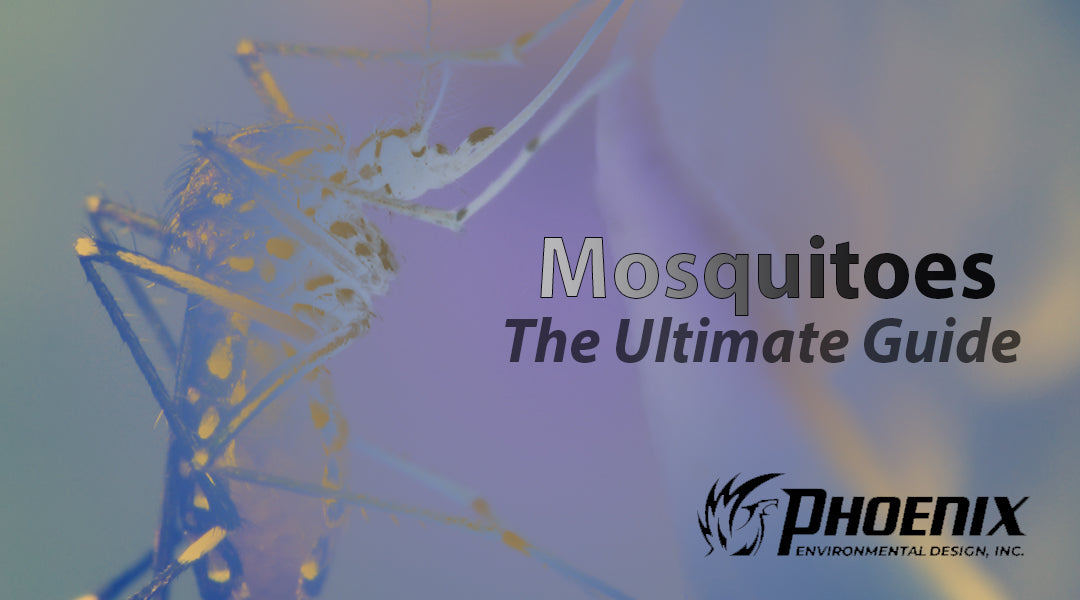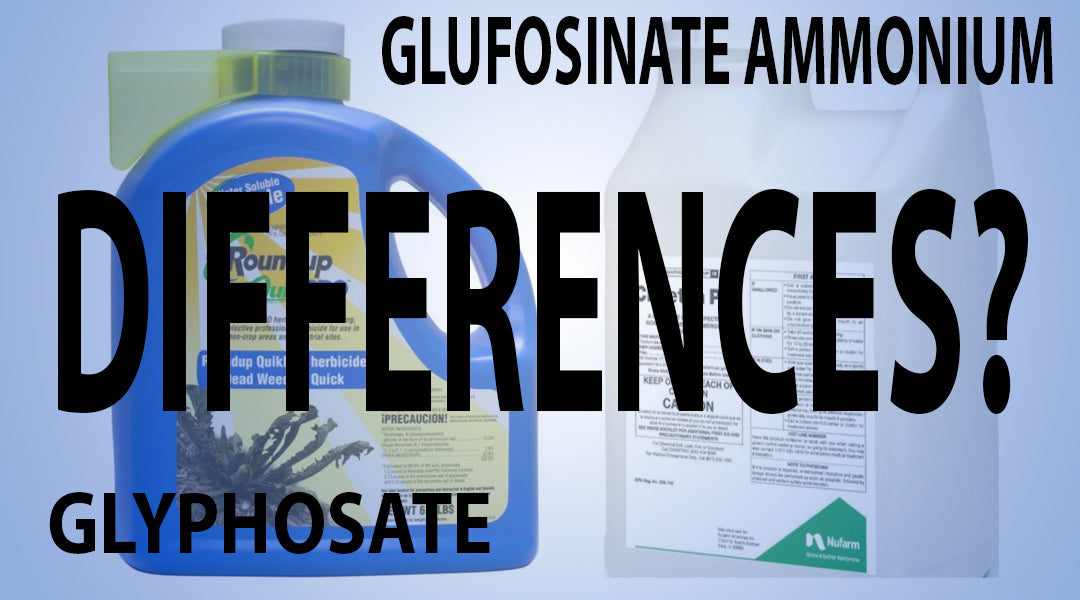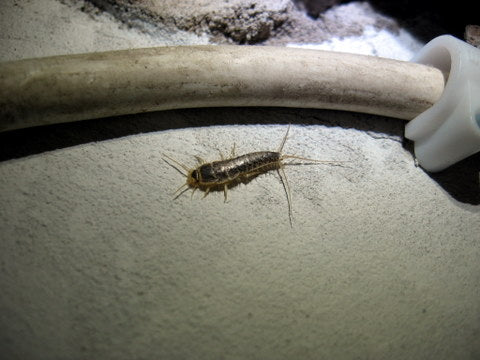
What Grass Needs for Growth
Just as humans need vitamins and minerals to maintain healthy bodies, grass requires various nutrients in which to grow healthy and strong. In fact, grass needs a minimum of 16 micro- and macronutrients for proper development. If it lacks any of these vital nutrients, the grass will not grow or develop as well as it could, leading to bald spots, brown patches and thinning throughout the landscape. These 16 nutrients include:
- Boron
- Calcium
- Carbon
- Chlorine
- Copper
- Hydrogen
- Iron
- Magnesium
- Manganese
- Molybdenum
- Nitrogen
- Phosphorus
- Potassium
- Oxygen
- Sulfur
- Zinc
Grass always has plenty of carbon, hydrogen and oxygen as these nutrients are available through the air and in the water. However, it can never get enough calcium or magnesium. It may also need higher quantities of nitrogen, phosphorus and potassium – nutrients that aren't readily available without fertilization.
Every nutrient plays an important role in turfgrass development. For example, nitrogen helps the grass to resist diseases and to tolerate stresses while affecting its density, growth and color. Iron is important for photosynthesis and chlorophyll formation, and phosphorus affects root growth and maturation. Potassium is also important as it helps the grass to build a tolerance for cold weather, droughts and diseases.
What Makes Fertilizer So Important?

Because grass can't get certain nutrients from the environment, it may not reach its full potential for color, thickness and hardiness. Fertilizer helps to fill in the gap, to boost turfgrass development and to maintain the lawn's health over time. It contains three important nutrients for growth: nitrogen, phosphate and potassium. These nutrients help the grass to thrive and to grow strong and vibrant while resisting traffic, pests and other stresses.
How Much to Fertilize
Fertilizers come with varying amounts of nitrogen, phosphate and potassium, so it's not recommended to purchase just any bag and to start applying it on the grass. The amount that's required on any particular grass depends on a few factors:
- Maintenance Goals: Thick, healthy turf will need more fertilizer compared to a thin, lightly colored turf. Fertilization spurs growth, so the grass will require more irrigation and mowing than normal. Keep these things in mind as fertilization increases lawn maintenance chores. However, the results are always worth the effort.
- Location: Growing seasons in the South are much longer than growing seasons in the North. A handy tip to remember is to apply 0.5 pounds of nitrogen per 1,000 square feet for each growing month. For example, in Colorado and Wyoming, which has a six-month growing season, the grass would require approximately 3 pounds of nitrogen during those six months.
- Grass Species: Some grasses respond better with little fertilizer while others require more in a growing season. Grass species such as tall fescue and western wheatgrass show adequate results with very little fertilization. Kentucky bluegrass and similar species need more fertilizer to produce the same results.
- Weather: Fertilizer must be applied more frequently during rainy summers than in drought-ridden summers. Irrigated turf also requires more fertilizer than nonirrigated turf.
- Soil Type: If turfgrass sits atop sandy and heavy clay soil, it will require more fertilizer than turf that's grown on silt loam soil. The soil's type and pH levels also affect the required amount of phosphorus and potassium for fertilization.
- Turf Age and Quality: Newly planted turf needs more fertilizer during the first few years to help with establishment and to improve its density. The same application rates and times apply for thin or neglected turfgrass.
- Clippings: Returning the clippings to the turfgrass stand help to reduce the amount of required annual fertilizer. Return the clippings back to the stand whenever practical. By doing so, it's possible to generate one pound of nitrogen per growing season.
The Numbers: Understanding Fertilizer Composition

As mentioned in the previous section, fertilizers contain three main nutrients to improve turf growth and development: nitrogen, phosphate and potassium. These nutrients show up on the package in the form of three numbers. For example, a bag may have the numbers 20-5-10 on the front label.
Each number represents the percentage of the three main ingredients. So if a label reads 18-24-12, it contains exactly 18 percent nitrogen, 24 percent phosphate and 10 percent potassium in that order. The label may also include other micro- and macronutrients with their respective percentages. Nitrogen fertilizers are characterized by the speed in which they release nitrogen to turfgrass and plants.
Quick-release fertilizers
Quick-release fertilizers supply the plants with nitrogen in just a few days and cause quick growth and color response. Because they have a higher nitrogen percentage, they work quickly and require less handling. They have numerous benefits but require special care to avoid damaging the turf and ornamentals.
Advantages of Quick-Release Fertilizers
- High nitrogen content so there's less material to handle
- Fast-acting with plant response in two or three days
- Lower cost per pound of nitrogen
- Applicable with urea and ammonium sulfate in the solution
Disadvantages of Quick-Release Fertilizers
- Limited to one pound of nitrogen per 1,000 square feet per application
- Labor costs rise with repeated applications
- May result in burn as the fertilizer salts dry out the plant tissue
- Increased clippings at mowing time due to overstimulation
- Susceptible to leaching and to losing some nitrogen after application
- More applications per growing season for short turfgrass
Types of Quick-Release Nitrogen
- Ammonium Sulfate: 21-00-00
- Ammonium Nitrate: 34-00-00
- Calcium Nitrate: 15-00-00-15.5
- Potassium Nitrate: 13-00-44
- Urea: 46-00-00
Slow-Release Fertilizers
Slow-release fertilizers gradually release nitrogen to the plant by way of microorganism breakdown. They contain either chemically stabilized nitrogen or a water-soluble or water-insoluble nitrogen that has a coating, which restricts solubility of the fertilizer.
Advantages of Slow-Release Fertilizers
- Have a high nitrogen content except with natural organics
- Can apply larger amounts at a time
- Less likely to burn the grass
- Residual nitrogen release for a longer time
- Less susceptible to leaching
- Less clumping during storage
Disadvantages of Slow-Release Fertilizers
- Twice the cost of quick-release fertilizer per unit of nitrogen
- Limited availability to be applied in a solution
- Slow initial response
- Strong odor
- More difficult to spread as a natural organic
Why Consider Slow-Release N?
Not everyone applies fertilizer at the most opportune time. In fact, people often apply it only when it fits their schedule and not when the conditions or the timing is right. Nitrogen is subject to environmental losses such as leaching to groundwater and denitrification, a process in which bacteria reduce nitrate and produce nitrite, nitric oxide or nitrous oxide.
What Does Controlled-Release Mean?
Controlled-release means the same as slow-release and is used interchangeably. It's also possible to hear the term delayed-response when reading about fertilization. The preferred term for all of these products is fertilizer technologies.
Fertilizer Technologies

One of the many fertilizers and plant growth regulators at Pedchem.
Fertilizer technologies are separated into three categories: uncoated, coated and bio-inhibitors. Each one has a special way of providing nitrogen through a controlled-release method:
Uncoated, Controlled-Release Fertilizers
- Decompose in the soil by chemical and biological processes
- Can contain various organically derived sources such as fish meals and sewer sludge
- Contain isobutylidenediurea and decompose through microbial action
- Also contain magnesium-ammonium-phosphate as the inorganic salt
Coated, Controlled-Release Fertilizers
Coated, controlled-release fertilizers use polymer, sulfur coatings or a combination of the two in order to deliver nitrogen to the plant.
- Sulfur-coated urea releases nitrogen through oxidation of the sulfur coating.
- Polymer-coated urea has a special polymer coating. As water moves through the coating, it dissolves the urea and releases the nitrogen.
Bio-Inhibitors
Bio-inhibitors are not truly classified as slow-release fertilizers but do somewhat slowly release available nitrogen to the soil. They contain chemicals that cause microbes to convert the nitrogen to plant-available forms. This microbial process makes the nitrogen susceptible to environmental losses but also results in an increased availability to the plant. Bio-inhibitors come in two different types: urease and nitrification.
Urease inhibitors kill the soil enzyme known as urease. By inhibiting this enzyme, the urea will not decompose as quickly and will have a chance to move farther into the soil through rainfall. It's important to control volatilization and to incorporate the urea into the soil. If measures are not taken, it can result in as much as a 20 percent nitrogen loss.
Urease inhibitors have several benefits, such as being added to UAN, a urea-ammonium nitrate solution. They can also be added to urea and may inhibit the soil enzyme for two weeks or more depending on the conditions. However, warmer temperatures may cause the urease to repopulate more quickly, thus shortening the control.
Nitrification inhibitors slow the denitrification process by bacteria in the soil. They prevent ammonium-nitrogen from converting to nitrate-nitrogen and reduce overall environmental losses due to leaching. These inhibitors keep the nitrogen in a special form that isn't easy for the plants to absorb. They delay the conversion for up to four weeks depending on the temperature and the soil's pH.
Common Fertilizers on the Market
It's not always easy to decide on a fertilizer to use with so many different blends available. In many cases, choosing a slow-release fertilizer will make the most sense and help to prevent burn while achieving positive results over time. With that said, making the choice comes down to two options: granular and liquid. Some of the more common granular slow-release nitrogen sources include:
- Poly sulfur-coated urea
- Polyon
- Duration
- UFlexx
- UMaxx
- NSN
- Nutrilene
- Nitriform
- Meythlene urea
- XCU
- DPW
- Milorganite
- Nutricote
Many different liquid nitrogen products also exist on the market and provide just as effective results, including:
- Coron 28-00-00: Liquid methylene urea
- N-Sure 28-00-00: Urea-Triazone Fertilizer Solution
- Gradual N 30-00-00: Liquid methylene urea
- UFlexx 46-00-00: Contains Agrotain and DCD
- UMaxx:47-00-00: Contains Agrotain and DCD
How to Create an Annual Fertilizer Program

Developing an annual fertilizer program comes down to a few things: the type of turf, the level of desired quality, the number of applications per season and the application technique.
Identify the Turf
With so many different grasses and plants in a yard, it's easy to see why there's a mass production of unique fertilizers. Not all fertilizers are the same, which is indicated by the numbers on the label. Each fertilizer has a different percentage of nitrogen, phosphate and potassium for specific uses. A fertilizer that may work great on new sod may severely damage mature grass. It's important to identify the turf, to understand the differences and the needs of cool- and warm-season grasses and to use the appropriate fertilizer for the situation.
Choose the Level of Quality
The difference between a good lawn and a high-quality lawn is the work that's put into it. A good lawn may only need one application per year. The clippings can be returned to the stand, and the grass may never require irrigation. A high-quality lawn is irrigated and mowed regularly. It may also receive pesticide treatments and up to two or three fertilizer applications per year.
How Many Applications?
Lawns don't benefit from overfertilization. Too much fertilizer can kill the grass; too little can have no effect whatsoever. As a rule of thumb, never apply more than a pound of nitrogen in a 1,000-square-foot area. Whereas some people fertilize in the fall, others fertilize their lawns in the spring and the summer. For example, those who have Kentucky bluegrass can fertilize in April or May to have a vibrant lawn in the winter. It's also possible to apply fertilizer in the fall. It all depends on the grass, the location, the site conditions and the overall quality expectations.
Liquid Vs. Granular
Having options doesn't always make a decision easier, and the debate between liquid and granular fertilizers has a history. It's really a matter of choice and the effects that one hopes to achieve through fertilization. Liquid fertilizers offer several benefits, such as providing immediate results as the plants can easily take in the solution. However, liquid fertilizers have to be applied more frequently, may cause burning and can leach deep into the ground, resulting in loss.
Granular fertilizers don't have to be applied often. Just one application can provide up to nine months of residual absorption. The effects may not show up right away, but there's a low risk of burning the turf. The slow uptake may not help the turf to recover from any nutrient deficiencies, and the granules will need constant watering to work effectively.






Leave a comment (all fields required)